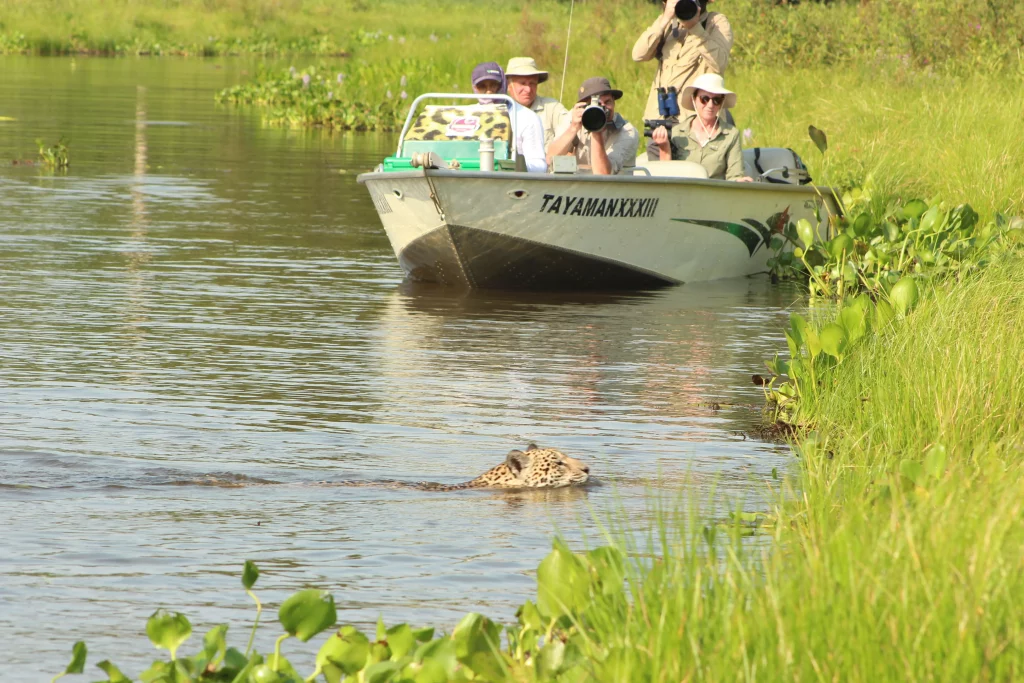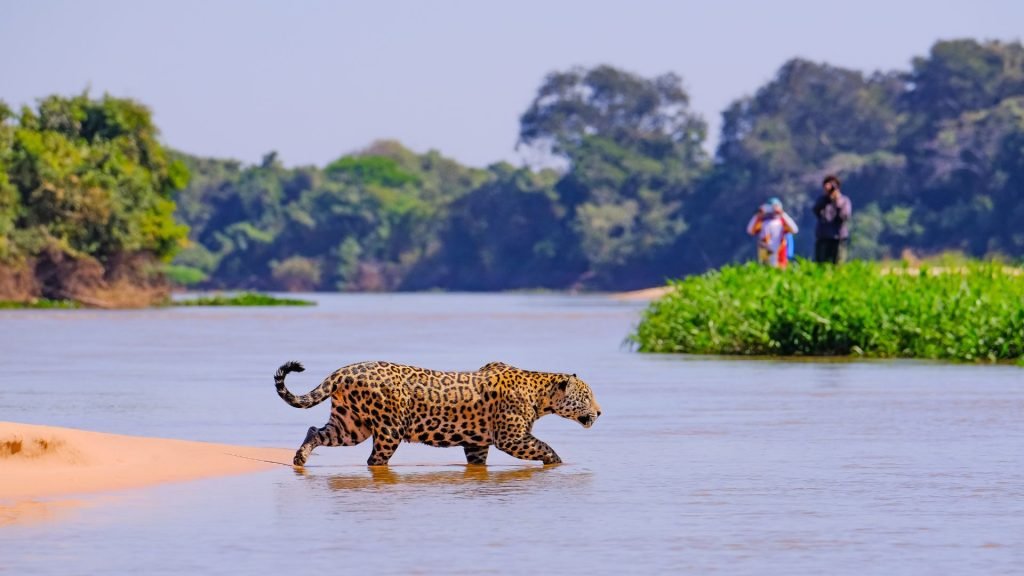The Amazon is a unique destination for wildlife and nature lovers, and one of the main attractions is the possibility of seeing jaguars in their natural habitat. This majestic feline, known for its strength and stealth, inhabits the dense tropical forests and the banks of the Amazonian rivers, offering an unforgettable experience for those who venture into the region.
If you’re looking for an authentic experience, the Pantanal is ideal for jaguar watching. This vast wetland, the largest savannah ecosystem in the world, is home to a great diversity of wildlife, including jaguars.

Experience the thrill of seeing jaguars in Brazil’s Pantanal with Pantaljaguar! Our exclusive tours take you to the wildest corners of the jungle, where you can observe these majestic felines in their natural habitat. Aboard boats, photo safaris or guided hikes, each adventure connects you with nature in a unique way. Don’t miss it! Visit our website and discover all the tours we have for you.
The Importance of Jaguars in the Amazon Ecosystem
Seeing jaguars in the Amazon is not only an incredible experience, but also a way to learn how these animals help maintain the balance of the jungle. Jaguars are very important to nature, because being the largest predators, they control other species and help keep the forest healthy.
- Jaguars are top predators, which means they are at the top of the food chain.
- They help control populations of other animals, which maintains the balance and diversity of species in the rainforest.
- Jaguars are also signs that the ecosystem is healthy and can support a wide variety of life.
- Protecting jaguars is key to conserving the Amazon’s biodiversity.

Top Destinations in the Amazon to Spot Jaguars
If you want to observe jaguars in the Amazon, there are several amazing destinations you can consider. Among the most prominent are the Manu National Park in Peru and the Pantanal, which encompasses regions of Brazil, Bolivia and Paraguay. Both places offer unique opportunities to spot these majestic cats in their natural habitat.
- The Manu National Park in Peru: It is one of the best places to see jaguars in the Amazon. The region is home to a large population of these cats, making the chances of sighting high.
- The Pantanal: Although it does not belong directly to the Amazon, it is a nearby region known for its abundant population of jaguars. This ecosystem is famous for the ease with which these animals can be observed.
Both destinations have specialized tours that allow visitors to enjoy the experience of seeing jaguars in their natural environment in a safe and exciting way.

Additional Activities to Enjoy the Amazon Rainforest
In addition to seeing jaguars in the Amazon, there are many other fun things you can do in the jungle. From exploring the local flora and fauna to learning about the traditions of indigenous communities, the Amazon offers you a wide variety of activities to enjoy.
- Guided hikes: You can tour the jungle and learn about the plants and animals that live there.
- Canoeing: In the rivers of the Amazon, you can see pink dolphins and other aquatic creatures.
- Visit indigenous communities: You will learn about their customs and learn how to make traditional crafts.
Live the adventure of a lifetime with Pantanaljaguar!
Can you imagine seeing jaguars in their natural habitat, exploring the incredible Amazon rainforest? With Pantanaljaguar, you can make it happen. We offer exclusive tours that take you to the best corners of the Amazon and the Pantanal, where you can spot jaguars and other amazing species in their environment.
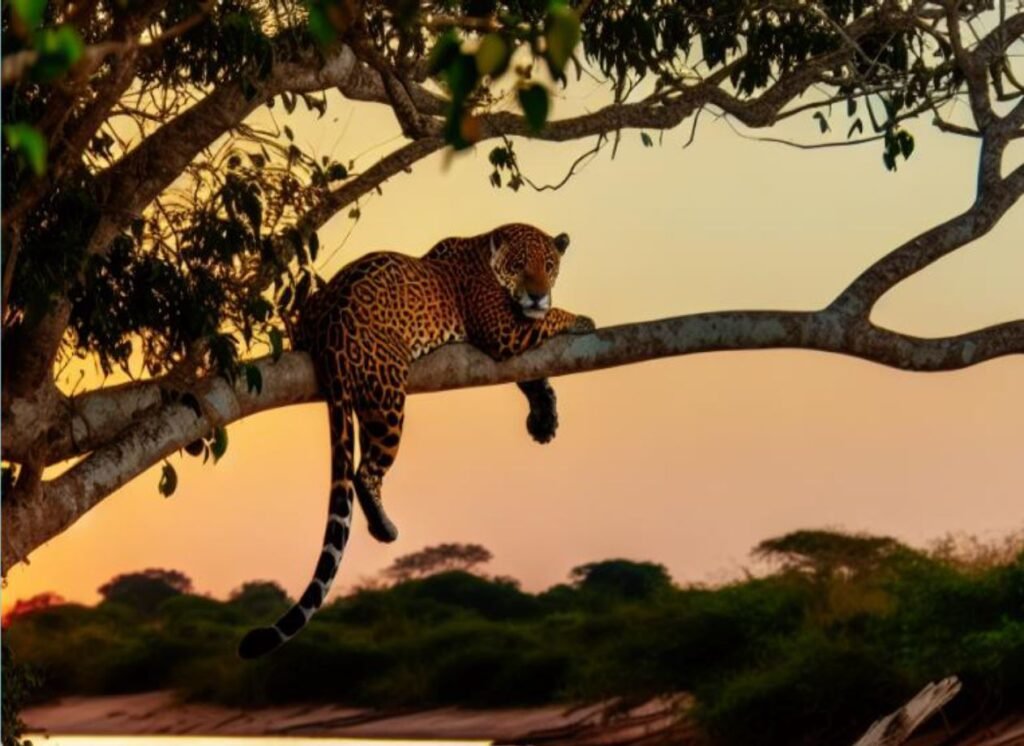
Tips to Maximize Your Odds of Seeing Jaguars
If you want to increase your chances of seeing jaguars in the Amazon, follow these practical tips. With preparation and attention to recommendations, your experience will be more exciting and rewarding.
- Hire local guides: Experienced guides are well-versed in the terrain and habits of jaguars. This significantly increases the chances of observing these felines in their natural environment.
- Choose the best times of the day: Jaguars are most active during sunrise and sunset. These hours are ideal for planning your outings and increasing the chances of sighting.
- Always have your camera ready: Having your camera ready is essential. Follow the guide’s instructions so you don’t miss any opportunity to capture a unique sighting.
Get ready for an unforgettable experience by following these suggestions, and enjoy your jungle adventure to the fullest.
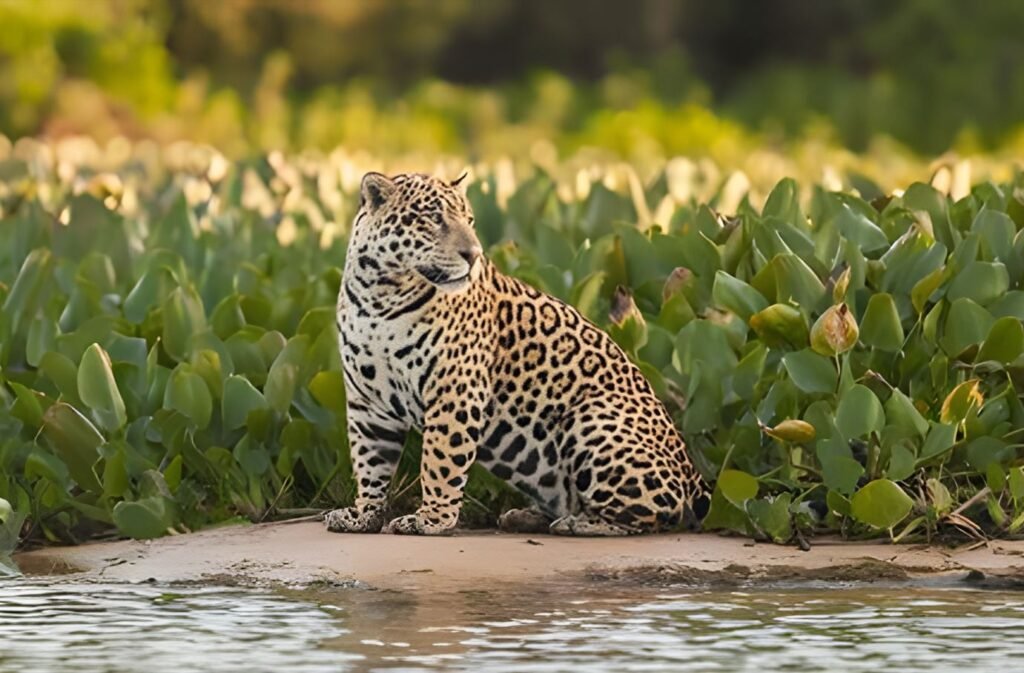
Planning Your Trip: Best Time of Year to See Jaguars in the Amazon
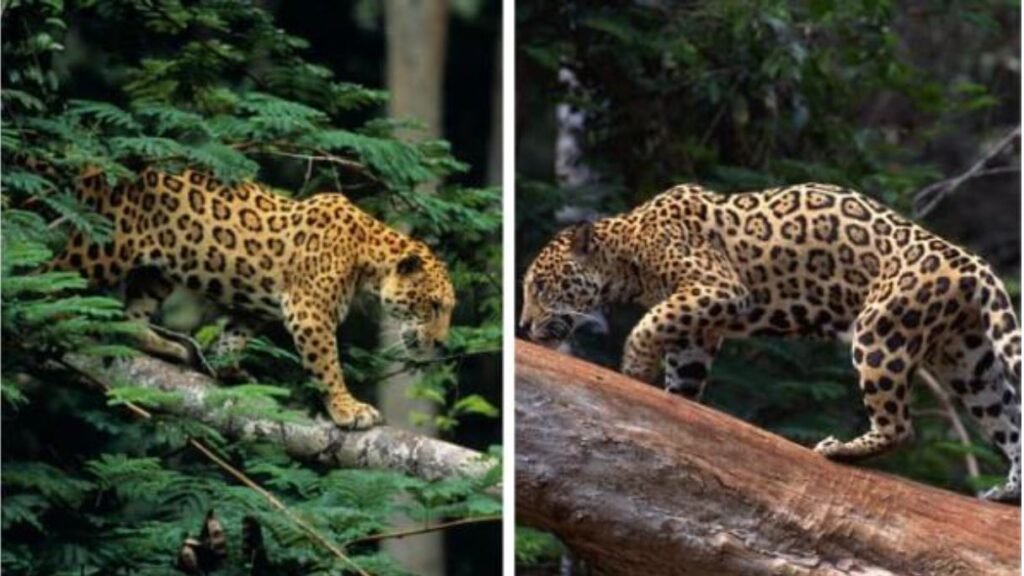
If you want to see jaguars in the Amazon, it’s important to choose the best time of year. In the dry season, jaguars are easier to spot, as they get close to rivers and lakes, making them easier to spot.
- Best time to see jaguars: The dry season, which varies by region, is the best time to spot jaguars.
- In the Pantanal, the dry season runs from May to October, when jaguars come closest to bodies of water.
- It’s important to research the specific seasons of the place you’re visiting to choose the best time and increase the chances of seeing jaguars.
Unique adventure with Pantanjaguar! Ready to see jaguars in the Amazon rainforest? With our exclusive tours, you will explore the best corners of the Amazon and the Pantanal. Jaguar sightings and more await you on safaris, hikes, and boat rides! Visit our website and discover your next adventure. The jungle is calling!
Frequently asked questions with answers
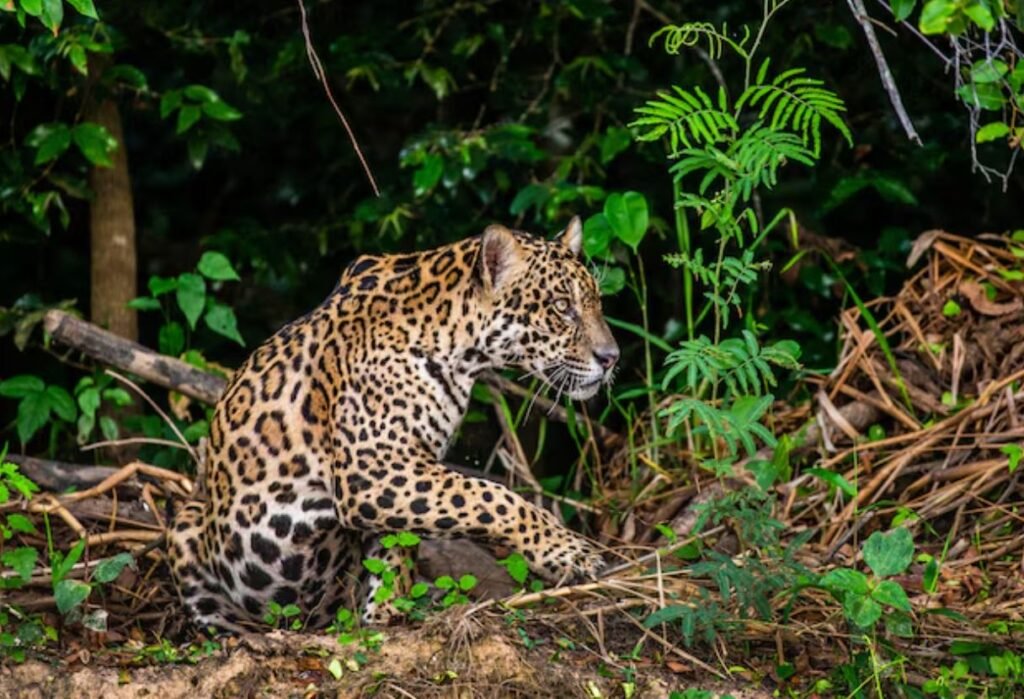
1. Where can I see jaguars in the Amazon?
You can see jaguars in places like Manu National Park in Peru and the Pantanal in Brazil, Bolivia, and Paraguay. Both are known for having many species of jaguars.
2. When is the best time to see jaguars?
The best time is during the dry season, which varies by region. In the Pantanal, for example, from May to October is when jaguars get closest to the water and it is easier to see them.
3. What other activities can I do in the Amazon rainforest?
In addition to seeing jaguars, you can take guided hikes to explore the plants and animals of the jungle, canoe down the rivers to see pink dolphins, and visit indigenous communities to learn about their traditions.


